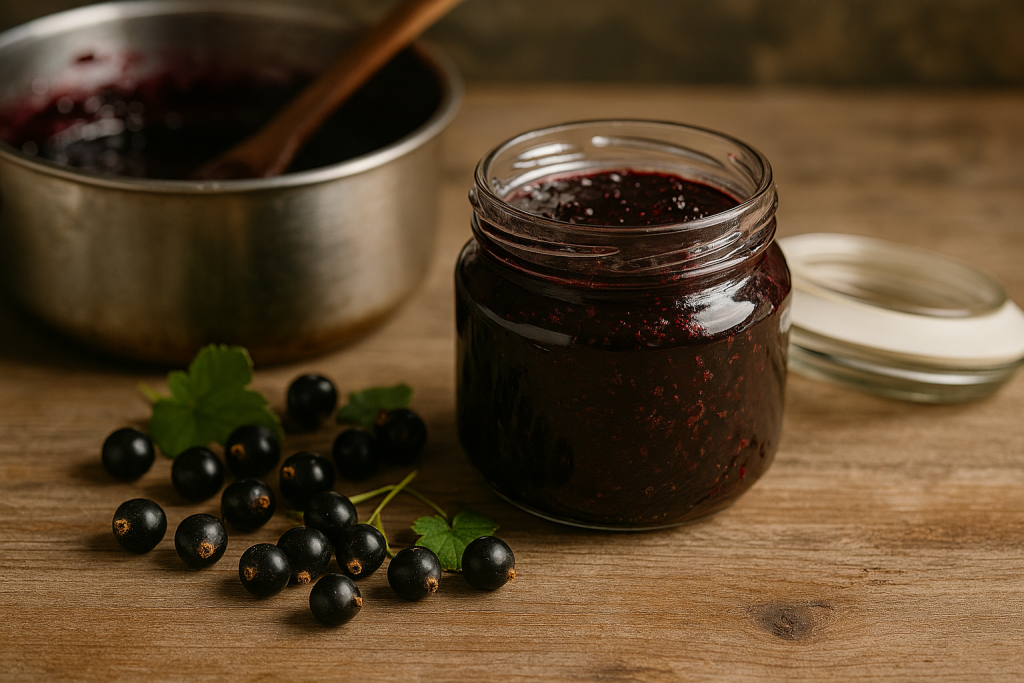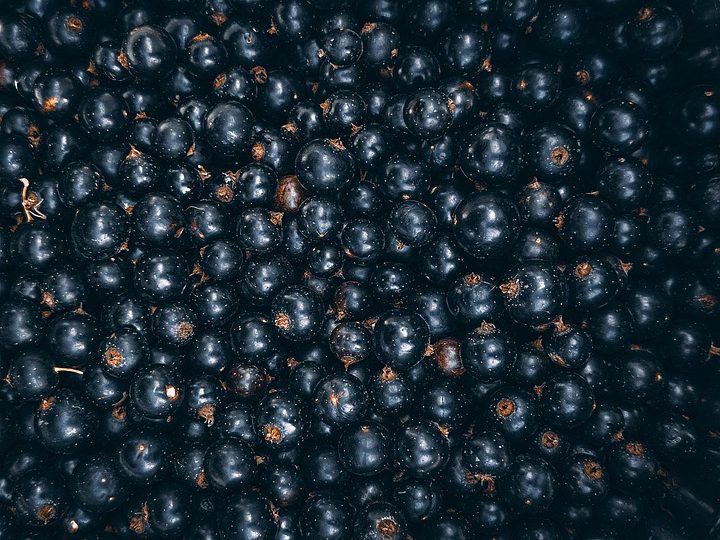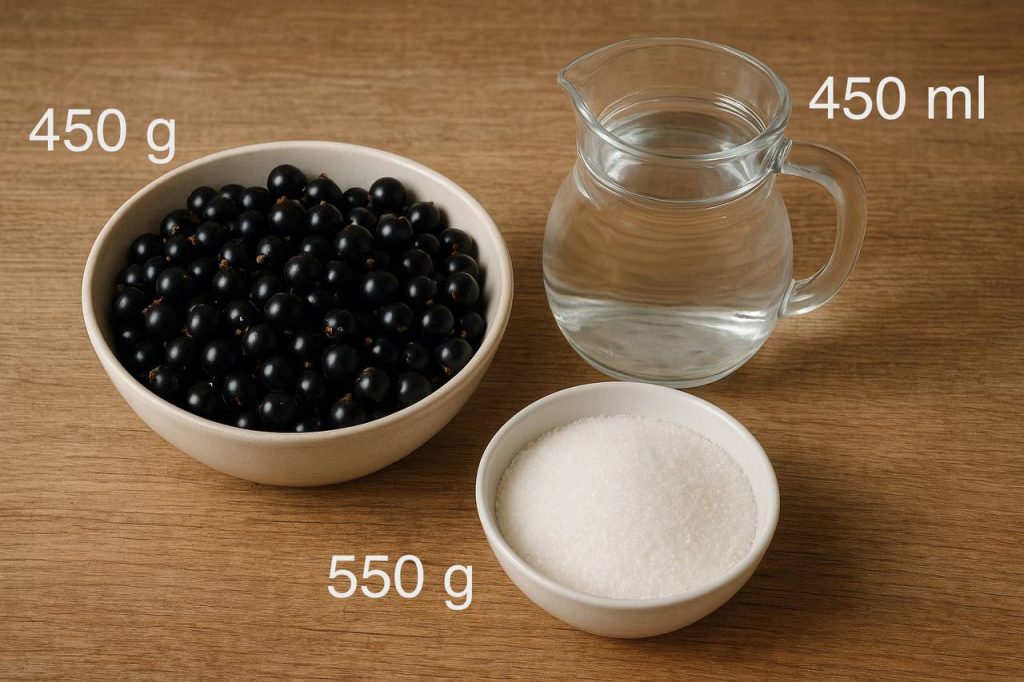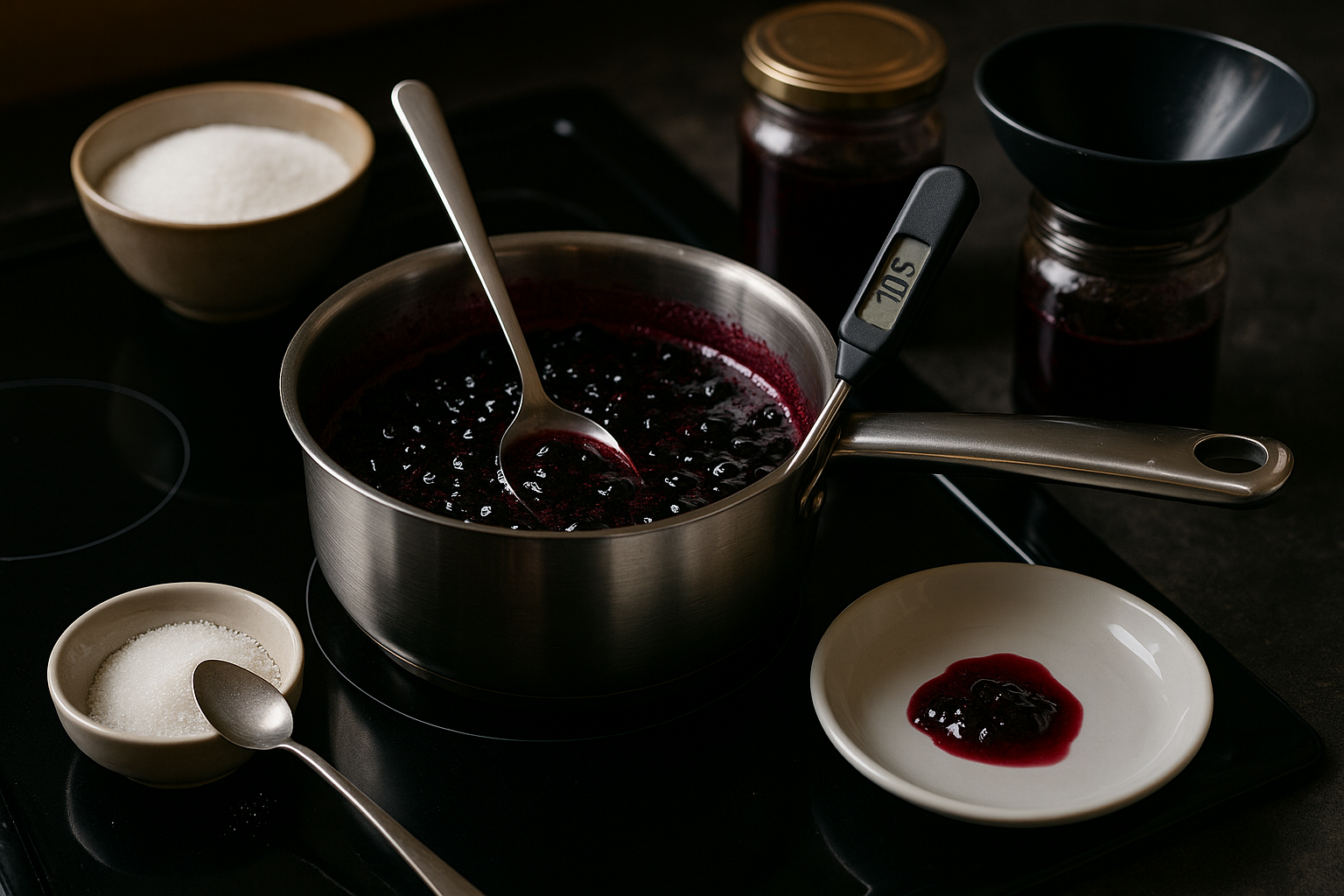Blackcurrant Jam, Delia-Style – a Straightforward Recipe That Sets Like a Dream
You want a pot of deep, tart jam that behaves. No faff. No added pectin. Delia’s approach is exactly that – fruit, water, sugar, heat, patience. Blackcurrants are naturally rich in pectin and acid, so the set comes from the fruit itself. That’s why this formula works so well.

Why This Method Works
Blackcurrants carry plenty of pectin – the stuff that makes jam gel – so you can use plain granulated sugar. Heat softens the skins and releases pectin; a hard boil drives off water and tips the mixture to setting point. It’s simple chemistry, not wizardry. If you need the comfort of numbers, jam sets around 105°C – or you can use the trusty cold-saucer test.

Ingredients (Small Batch)
- 450g blackcurrants, stalks removed
- 450ml water
- 550g granulated sugar
Those amounts suit a standard pan and give a few neat jars. The ratio also plays nicely with the fruit’s natural pectin, so you get a firm, spreadable finish without jam sugar.

Equipment You’ll Need
- Large, heavy saucepan
- Wooden spoon
- A couple of clean saucers (for set testing)
- Warm, sterilised jars with lids
No preserving pan? You’ll be fine – just don’t fill your pot to the brim when it boils. For testing, the saucer method is old-school and reliable.
Step-by-Step: Delia-Style Blackcurrant Jam
- Soften the fruit
Rinse the blackcurrants and pull off any lingering stalks. Put fruit and water into the pan. Bring to a gentle simmer for about 10 minutes, until the skins are tender and the liquid turns inky. That’s your pectin release starting. - Dissolve the sugar
Stir in the sugar off the heat until no gritty crystals remain. Undissolved sugar is the road to crystals later – and nobody wants sandy jam. - Boil hard
Return to the heat and boil vigorously for 10–15 minutes. Keep an eye out – a steady, rolling boil is the goal. - Test the set
Take the pan off the heat. Dot a spoonful on a chilled saucer, wait a few seconds, then push with your fingertip. If it wrinkles, you’re there. If not, boil for 2–3 minutes more and test again. Thermometer users can aim for 105°C, but the saucer tells the truth. - Pot and seal
Skim any froth if it bothers you, then ladle the hot jam into warm, sterilised jars. Seal at once. Stored cool and dark, properly sealed jars keep for months; once opened, treat it like any jam and refrigerate.

What to Expect
This style gives a bold, sharp jam with a clean set. Because blackcurrants are high-pectin fruit, you don’t need lemon juice or jam sugar to get a gel – normal sugar is fine. If you prefer a slightly softer, glossier finish, take it off the heat as soon as it passes the wrinkle test.
Common Pitfalls – and Quick Fixes
| Didn’t set | You probably stopped a touch early. Put it back on the heat and give it another hard 2–3 minute boil, then test again. The plate never lies. |
| Too stiff | It went a smidge too long. Next time, start testing at the 10-minute mark. |
| Crystals | Sugar wasn’t fully dissolved. Warm the fruit gently before the full boil and stir until it’s silky. |
| Cloudy jars | Skim froth or just ignore it. It’s harmless. |
| Bitter notes | Stalks slipped in. Be ruthless with prep; those little stems carry tannins. |
Make It Yours (Without Breaking the Set)
- Seed-light version – Briefly mash, then sieve the softened fruit for a jelly-style texture before adding sugar. Weigh the pulp and follow a sugar-to-pulp ratio close to 4:5 for a balanced set.
- Cassis twist – Stir a tablespoon of crème de cassis into the pan off the heat for a grown-up note.
- Herbal nudge – A few lavender buds or a strip of lemon zest can infuse during the boil; remove before potting. (Go light – blackcurrant is bossy).
How to Test for Set – Three Options
- Thermometer – 105°C is the classic jam point.
- Wrinkle test – The cold-plate method: wrinkle equals set.
- Flake test – Lift the spoon and watch for a sheet-like drop.
Use what you like – the goal is a gel that holds on toast and relaxes slightly in warm yoghurt.
Storage, Serving, and Small Batches
Blackcurrant jam is happy in a cool cupboard for several months if sealed well. Open jars live in the fridge. It freezes, too – leave headroom. Spoon it into porridge, ripple through Greek yoghurt, glaze a chocolate torte, or go classic with scones and clotted cream.
A Note on Sugar Ratios
Many jams use a 1:1 fruit-to-sugar ratio; blackcurrant’s natural pectin means you can edge lower if you prefer something less sweet, but sweetness helps both set and shelf-life. If you cut sugar, expect a softer set and shorter keeping time. Your call.
Why Blackcurrant Is So Forgiving
Beyond flavour, blackcurrants are a gift to preservers. Their naturally high pectin and acidity make jams and jellies that set readily – one reason they’ve been pantry favourites for generations. If you’re nervous about your first preserve, start here.
